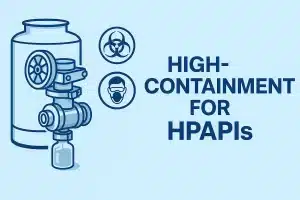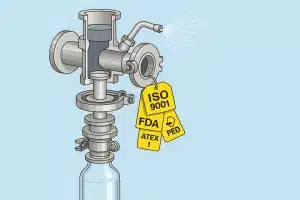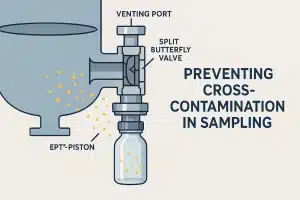A water heater leaking at the relief valve is a common issue that homeowners and businesses encounter, and it often signals a problem with the water heater’s pressure or temperature control.
The relief valve is a critical safety feature designed to release excess pressure or temperature from the tank to prevent damage or even explosions.
When water leaks from the relief valve, it’s an indicator that the valve is doing its job—but it can also mean that something is wrong within the system.
In this post, we’ll explore the causes of water heater leaks at the relief valve and provide solutions to fix the issue and prevent further damage.
What Is the Role of a Water Heater Relief Valve?
A water heater relief valve (specifically a Temperature and Pressure Relief Valve or TPR valve) is a safety mechanism that opens when the pressure or temperature inside the water heater tank becomes too high.
This valve prevents dangerous conditions like tank rupture or explosion by releasing water from the tank and allowing the pressure to return to safe levels.
A water heater leaking at the relief valve is often a sign that the system is under excessive pressure or that the relief valve is malfunctioning.
Common Causes of Water Heater Leaking at the Relief Valve
If your water heater is leaking at the relief valve, several factors could be causing the issue. Understanding the root cause is key to determining the best course of action for repair or replacement. Here are some common reasons why this may happen:
- Excessive Pressure Build-up: When the water heater’s pressure exceeds the valve’s set limit, the relief valve will open to release the pressure. Continuous leakage could be a sign that the pressure relief valve is functioning correctly but that the pressure is too high.
- Overheating of the Water: If the temperature inside the water heater exceeds the valve’s preset temperature limit, the valve may release water to prevent overheating. Overheating can be caused by a faulty thermostat or a malfunctioning heating element.
- Faulty Pressure Relief Valve: The relief valve itself could be faulty, either due to age, wear, or debris blocking the valve, causing it to leak when it shouldn’t.
- Thermal Expansion: As water heats up, it expands, which can increase pressure inside the tank. If a thermal expansion tank is not present or is malfunctioning, it can lead to excessive pressure and leakage at the relief valve.
- Sediment Buildup: Over time, minerals and sediment can accumulate in the water heater tank. This buildup can increase pressure and temperature inside the tank, triggering the relief valve to leak.
Is your water heater leaking? Contact our experts to diagnose the issue and restore your system to optimal performance.
Solutions to Fix Water Heater Leaking at the Relief Valve
There are several practical solutions to address water heater leaks at the relief valve, depending on the underlying cause. Here’s what you can do:
- Check the Pressure Setting: Verify the water heater’s pressure setting. If the pressure is too high, the thermostat may need adjustment or the pressure relief valve may need to be replaced with one that can handle higher pressure.
- Replace the Faulty Relief Valve: If the relief valve itself is old, corroded, or malfunctioning, replacing it is often the most effective solution. Ensure that the new valve is the correct size and pressure rating for your water heater model.
- Fix Overheating Issues: Inspect and repair any issues with the thermostat or heating elements. A malfunctioning thermostat can cause the water temperature to rise too high, triggering the relief valve to leak. Replacing a faulty thermostat or heating element will stop this from occurring.
- Install a Thermal Expansion Tank: If thermal expansion is the cause of the pressure buildup, adding or replacing a thermal expansion tank can help regulate pressure and prevent the relief valve from leaking.
- Flush the Tank: To remove sediment buildup that can contribute to high pressure and temperature, perform a regular flush of the water heater. This will help extend the life of your water heater and prevent future leaks.
For businesses seeking reliable and efficient components, Famat sa is the ideal choice for their needs.
Frequently Asked Questions About Water Heater Leaking at the Relief Valve
What Should I Do if My Water Heater is Leaking at the Relief Valve?
If your water heater is leaking at the relief valve, the first step is to turn off the power and water supply to the heater. This will help prevent further damage.
Once the system is off, assess whether the issue is due to excessive pressure, overheating, or a faulty valve.
Can a Leaking Relief Valve Cause Damage to My Home?
Yes, if left unchecked, a leaking relief valve can lead to water damage in your home, especially if it continues to release water. Additionally, if the underlying issue is not resolved, it could result in damage to the water heater or cause safety hazards.
Famat sa offers cutting-edge valve technologies that meet the demands of various industries, including oil and gas.
Preventing Future Leaks from the Relief Valve
To avoid future issues with water heater leaks at the relief valve, consider these preventive measures:
- Regular Maintenance: Perform routine maintenance on your water heater, including inspecting the relief valve, pressure, and temperature settings. Regular flushing of the tank will also prevent sediment buildup.
- Install a Pressure Regulator: A pressure regulator can help keep the water heater’s pressure within safe limits, preventing the relief valve from leaking due to high pressure.
- Monitor the Temperature Settings: Ensure that the temperature is set to a safe level (typically around 120°F) to avoid overheating and triggering the relief valve.
Prevent future leaks and extend the life of your water heater with our expert maintenance services. Schedule an inspection today!
Conclusion
A water heater leaking at the relief valve is a serious issue that requires immediate attention. Whether caused by excessive pressure, overheating, a faulty valve, or sediment buildup, it’s crucial to address the root cause of the problem. By following the solutions outlined above—replacing faulty components, adjusting pressure settings, and maintaining the system—you can resolve the issue and prevent future leaks.
For added reliability, consider pairing your water heater with a full port ball valve for more precise control over water flow and enhanced performance.





